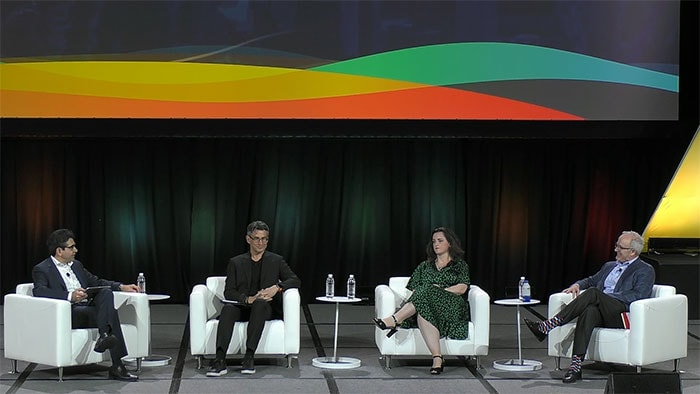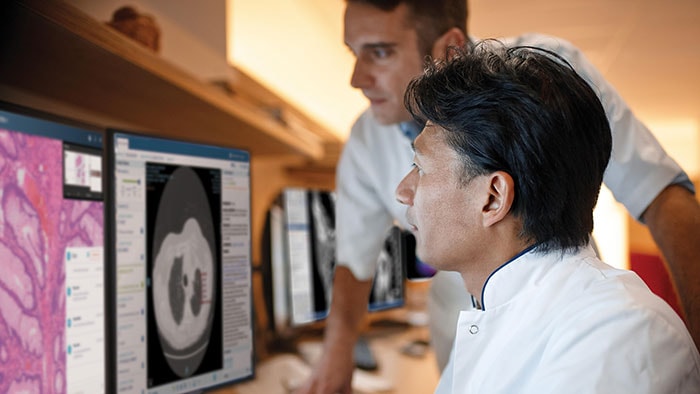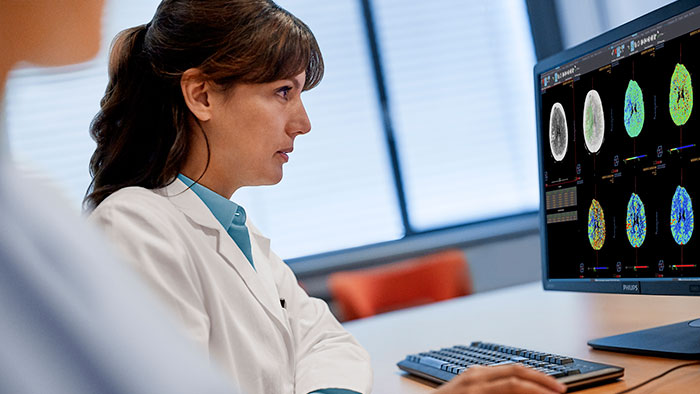November 26, 2018
Philips Illumeo with adaptive intelligence has been selected by University of Utah Health radiologists
First results in clinical use show early benefits of Philips Illumeo with adaptive intelligence for complex, advanced cases
Amsterdam, the Netherlands and Chicago, Ill – At the 2018 Radiological Society of North America Annual Meeting (RSNA), Royal Philips (NYSE: PHG, AEX: PHIA), a global leader in health technology, today announced that radiologists at the University of Utah Health are leveraging Philips Illumeo with adaptive intelligence to interact with imaging data to enhance physician expertise and efficiency. Initial results include productivity benefits in turnaround time, same day readings, and context driven tool selection. Artificial intelligence (AI)-based solutions have the potential to increase the efficiency of care delivery and improve patient care. Through solutions that combine AI and other technologies with knowledge of the clinical and operational context in which they are used, Philips provides a people-centered approach called adaptive intelligence. This augments the capabilities of clinicians to seamlessly connect people, data and technology to empower radiologists. University of Utah Health provides care for residents of Utah and five surrounding states, with a referral area that encompasses more than 10 percent of the continental U.S. Due to this large volume of coverage and an increase in imaging data, the radiology department faces increasing amounts of imaging studies and data that need to be processed – about five hundred thousand per year. The health system selected to implement Illumeo, an imaging and informatics technology with adaptive intelligence, to intelligently interact with imaging data. Illumeo combines contextual ques and Anatomy Awareness capabilities with advanced data and image processing to augment the radiologist’s routine activities. The technology supports interactions with imaging data comparisons and provides an integrated view of clinically relevant, case-related information from various sources, designed to optimize workflow and enhance care consistency. “Illumeo leverages adaptive intelligence and analytics1 to anticipate what a radiologist needs to do next, allowing him/her to interact with imaging data in a much more intelligent way,” said Richard Wiggins, MD, Professor of Radiology and Imaging Sciences, University of Utah Health. “The solution moves beyond just hanging protocols, by providing a faster way for radiologists to find all similar series of studies and compare them side-by-side to see if lesions are getting larger over time. This new technology allows us to further improve time savings and efficiencies so we can provide the best care to our patients.”2
Positive improvements through continued collaboration
In addition to providing worklist benefits to more intelligently route studies to the appropriate groups of radiologists through IntelliSpace PACS Radiology Workspace Solution (RWS), there are multiple administrative goals the health system hopes to facilitate and achieve with the adoption of Illumeo in conjunction with RWS, some of which are already being delivered1, including: “Adaptive Intelligence will help clinicians sort through increasing amounts of data, and automate manual tasks to summarize and present data into existing workflows. Our goal with Illumeo, and all of our Adaptive Intelligence-powered solutions, is to create a seamless radiology experience, delivering the right data at the right time,” said Carla Kriwet, CEO of Connected Care and Health Informatics at Philips. “We are excited to see these early results from Dr. Wiggins and his team, demonstrating that Adaptive Intelligence-based solutions developed with an understanding of clinical needs, and in close collaboration with those using them, will be most successful as the healthcare industry continues to adopt these tools.”
Philips Live! Forum at RSNA
On Monday, Nov. 26th, Dr. Wiggins will present in the Forum section of the Philips booth (#6734) to discuss Illumeo as a key driver in the user-centric approach to radiology workflow design. For a complete list of PhilipsLive! Sessions during RSNA, visit www.philips.com/rsna. For more information on Philips’ full portfolio of integrated smart systems, software and services, including the latest features of Illumeo being shown at #RSNA18, and for live updates from the event, follow @PhilipsLiveFrom or visit www.philips.com/rsna. 1Results from specific user experience are not predictive of results in other cases. Results for other users may vary. 2This is based on results from this site.
About Royal Philips
Royal Philips (NYSE: PHG, AEX: PHIA) is a leading health technology company focused on improving people's health and enabling better outcomes across the health continuum from healthy living and prevention, to diagnosis, treatment and home care. Philips leverages advanced technology and deep clinical and consumer insights to deliver integrated solutions. Headquartered in the Netherlands, the company is a leader in diagnostic imaging, image-guided therapy, patient monitoring and health informatics, as well as in consumer health and home care. Philips' health technology portfolio generated 2017 sales of EUR 17.8 billion and employs approximately 77,000 employees with sales and services in more than 100 countries. News about Philips can be found at www.philips.com/newscenter.












